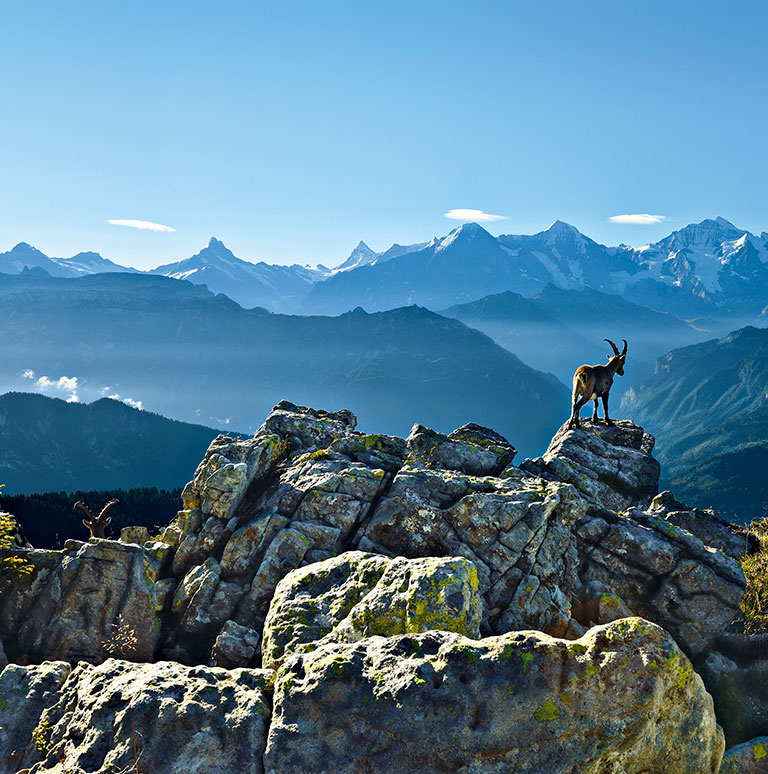
Switzerland - Ten Things To Know
 Share
Share
 comments
comments
Switzerland is a country of mountains and lakes; cheese and chocolate; cows and clocks. If you’re planning to visit this small and extremely picturesque country, here are ten things that are good to know before you go.
- The population of Switzerland sits just over 8 million, in an area roughly two-thirds the size of Tasmania. Bern is the country’s capital city, but Zurich is the largest, with a population of just over 400,000.
- There are four national languages: German, which is mostly spoken in central and eastern Switzerland; French, which is mostly spoken in the west; and Italian, which is spoken in the south. The fourth language, Romansch, is spoken by just one percent of the population, mostly in the east of the country. English is widely spoken and understood, but it’s worth learning a few basic phrases in the local languages.
- The Swiss people take pride in their reputation for being polite and friendly, but don’t expect them to queue in an orderly fashion if you’re waiting for a train or a ski lift: just join the crowd and get ready for the rush.
- Chocoholics rejoice! Switzerland is still the home of amazing chocolate. But don’t buy your chocolate at the supermarket: the best Swiss chocolate is made and sold by small, local chocolatiers. Try the Swiss version of a hot chocolate while you’re at it: it’s basically just melted chocolate with hot milk.
- Happy Swiss cows make great cheese: the best way to try it is in a traditional fondue or raclette meal. If you have a sweet tooth but can’t face any more chocolate, try the bűndnernusstorte, a rich but delicious nut and caramel-filled pastry that’s a speciality of eastern Switzerland.
- The Glacier Express, Centovalli Railway and Bernina Express are three of the country’s most scenic rail journeys. The Swiss rail network is extensive and trains are renowned for being clean, comfortable and extremely punctual. Rail passes make point-to-point travel a lot more affordable so buy one before you leave home if you’re planning on travelling by train.
- Switzerland is home to the world’s longest and deepest tunnel: the 57-kilometre long Gotthard rail tunnel. It opened in 2016 and runs beneath the Alps, connecting the cities of Erstfield in central Switzerland and Bodio in the south.
- Cuckoo clocks are not actually a Swiss invention, but the country is home to Europe’s largest church clock face (St Peter’s Church in Zurich, measuring 8.7 metres in diameter) and Europe’s second-largest clock face (Aarau railway station, measuring 9 metres). If you want to bring home an authentically Swiss souvenir, consider an army knife, a wooden walking stick or some hand-made lace.
- Switzerland is famous for its alpine landscapes, but between the mountains you will find lots of pristine lakes: almost 1,500 of them in total. The largest is Lake Geneva, also known as Lac Léman, which is shared with France and forms part of the Swiss-French border. From Geneva it’s an easy day trip to the French alpine resort town of Chamonix to ride the cable car to the summit of the Aiguille du Midi. On a clear day you can even see the Matterhorn, the mountain whose shape is copied by Toblerone.
- One of the best ways to enjoy Switzerland’s magnificent scenery is on foot. Whether you prefer a lakeside stroll or a more energetic mountain hike, there are trails everywhere, so find yourself a good Swiss wooden walking stick, pack some Gruyère cheese and freshly-baked Zopf bread for a picnic lunch, and you’re all set. If you’re after a more sedate experience, Switzerland has a number of impossibly-picturesque car-free villages so you can wander the streets, absorbed in your surroundings, without having to worry about the traffic. Rigi, near Lucerne, is one such village, and has the added bonus of being located at the top of Europe’s oldest cog railway.
For more suggestions and tips on making the most of your holiday adventure to Switzerland, including inspiration on where to go contact your local personal travel manager here.
Comments


